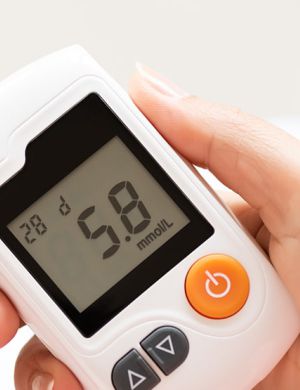
Pharma/Biotech – USA, Europe Regulatory News, July 2023 Vol. 1
USA
CMS IRA Updates Bring No Significant Strategic Shift for Manufacturers
Despite ongoing lawsuits and thousands of public comments, CMS has made limited adjustments to the drug price negotiation sections of the Inflation Reduction Act. Although some revisions may simplify the process for companies wishing to exit Medicare, the law’s core enforcement mechanisms remain strong. These include a potential excise tax of up to 95% of sales for noncompliance and daily penalties reaching $1 million.
Broader Scope and Clarity Requested for FDA Guidance on COAs
Industry groups—including BIO and the International Society for Cell & Gene Therapy—have urged the FDA to expand and clarify its draft guidance on incorporating clinical outcome assessments (COAs) into trial endpoints, noting that several areas need further detail.
Section 503B: Compounders Barred From Selling to Wholesalers
A new draft guidance issued June 27 outlines the FDA’s interpretation of the exemption criteria under section 503B of the Food, Drug & Cosmetic Act. The guidance reinforces that outsourcing facilities may not sell compounded drugs to wholesalers to qualify for the exemption.
ICH Introduces New Workstreams on Patient Preference, Safety and Bioequivalence
The International Council for Harmonization (ICH) has initiated efforts to develop new guidelines addressing patient preference, nonclinical safety evaluation for oligonucleotide therapies, and bioequivalence for modified-release products.
FDA’s Regulatory Priorities Highlight Changes Across LDTs, NDC, and Device QSR
The FDA’s regulatory agenda for the next year includes more than 30 proposed and final rules on drug, biologic, and device regulations. Release timelines differ across the topics.
FDA Details Process for Major-to-Minor Reclassification Requests
A newly issued MAPP describes how the FDA evaluates requests to reclassify complete response (CR) letters from major to minor, outlining internal decision-making procedures.
GDUFA III Fee Structure Implementation Clarified
Final guidance released Friday provides details on how FDA is implementing fee program updates under the Generic Drug User Fee Amendments of 2022 (GDUFA III).
FDA Launches Real-World Evidence Program Under PDUFA VII
The FDA has chosen the first applications for participation in its Advancing Real-World Evidence (RWE) program, which offers sponsors multiple agency meetings to discuss RWE use in regulatory submissions. Launched in October 2022 under PDUFA VII, the program aims to support development of regulatory-grade RWE.
FDA Emphasizes Stronger Expectations for Process Validation
Process validation—a longstanding priority within cGMP enforcement—has seen increased scrutiny from FDA, with the agency signaling tougher expectations for compliance.
FDA Confirms Optional Nature of Cover Letter Attachments for Generics
In recently finalized guidance, the FDA clarified that the checklist-style cover letter attachments used for controlled correspondence and generic submissions are voluntary.
FDA Seeks Comment on Updated Draft of ICH E6 (GCP)
The FDA is soliciting input from sponsors, investigators, sites, and other stakeholders on the revised draft of the ICH E6 guideline on good clinical practice.
ICH Issues Paper Promoting Stepwise Global Alignment of RWE
ICH has released a Reflection Paper proposing a phased approach to harmonizing real-world data and evidence frameworks. The document, endorsed in June 2023, remains open for consultation until September 30, 2023, and a final version is expected in June 2024.
FDA Updates Site Selection Model to Incorporate Location-Based Risk
New internal MAPP guidance expands FDA’s site selection model for surveillance inspections to include risk factors tied to a region’s history of regulatory violations related to exported products. This revision builds on the 2018 model.
FDA Finalizes Guidance on Quantitative Efficacy and Risk Information for DTC Advertising
Final guidance issued this week outlines best practices for presenting quantitative efficacy and risk data in direct-to-consumer (DTC) labeling and advertising for human and animal prescription products. The guidance focuses on clear presentation, probability explanations, formatting, and visual aids.
EUROPE
EMA Opens Consultation on ICH-Endorsed RWD/RWE Paper
The EMA has released for comment an ICH-endorsed draft reflection paper recognizing the expanding global use of real-world data and evidence.
MHRA Strengthens Oversight of High-Risk Technologies
The MHRA plans to intensify regulatory oversight of high-risk and emerging technologies, while reducing oversight for clearly low-risk products. These priorities are part of its strategic plan through 2026, which includes promoting equity, transparency, scientific excellence, and service-oriented operations.
EFPIA Leadership Highlights Desired Revisions to EU Pharma Legislation
The new EFPIA leadership has outlined key revisions they hope to see in the EU’s draft pharmaceutical legislation. Industry leaders argue that the current proposals could weaken Europe’s R&D competitiveness and place unrealistic expectations on timely access across all Member States.
Guidance for Parallel EMA/HTAb Scientific Advice During Interim Phase
This guidance outlines ideal processes and timelines for collaborative scientific advice involving both the EMA and health technology assessment bodies (HTAbs). Clear communication and shared responsibilities are emphasized to ensure coordinated outcomes.
EMA Post-Authorization Procedures: Guidance for MAHs
A detailed guidance document provides marketing authorization holders with answers to common post-authorization questions, supporting proper preparation and submission of compliant applications.
Guideline on Notifying Serious Breaches of EU Clinical Trial Regulation
Developed with the MHRA, this guideline establishes procedures for reporting serious protocol breaches under Regulation (EU) No 536/2014. It excludes reporting obligations related to unexpected events or participant safety measures.
ICH Reflection Paper on Harmonizing RWE Terminology and Reporting
This Reflection Paper proposes aligning terminology for RWD and RWE, establishing consistent formats for protocols and study reports, and encouraging registration of study documentation to support regulatory evaluation across a product’s lifecycle.
Don’t miss out! Click here to stay in touch.
Categories
- Biopharma (58)
- Consumer Health (21)
- Cosmetics (11)
- Diagnostics (5)
- Digital Health (8)
- Food (2)
- Medical Device (112)
- OTC (5)
- Regulatory Intelligence (13)
- Standards (41)
Recent Blogs
Get the latest updates from Vistaar

CONNECT WITH US

Let's talk about how Vistaar can help you




